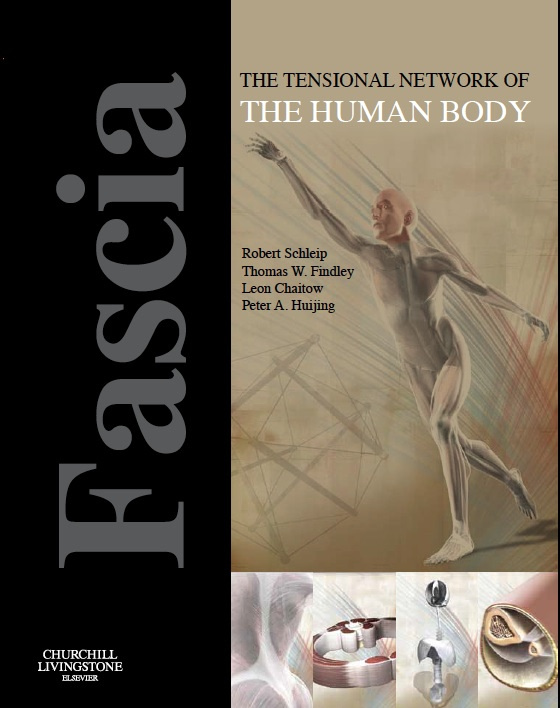What is the role of loose connective tissue in chronic neck pain?
An article published in 2014 offers food for thought:
Ultrasonography in myofascial neck pain: randomized clinical trial for diagnosis and follow-up. Antonio Stecco et al Surg. Radiol. Anat. 36:243-253
The Abstract of this paper outlines their findings:
Objective A definitive diagnosis of chronic neck pain (CNP) is sometimes not possible. The aim of this study was to understand the possible role of the deep fasciae in CNP and the utility of the ultrasonography in the diagnosis of
myofascial neck pain.
Methods The morphometric and clinical data of 25 healthy subjects and 28 patients with CNP were compared. For all subjects, the active and passive cervical range of motion (ROM) was analyzed and the neck pain disability questionnaire
(NDPQ) was administered. The fascial thickness of the sternal ending of the sternocleidomastoid and medial scalene muscles was also analyzed by ultrasonography.
Results There were significant differences between healthy subjects and patients with CNP in the thickness of the upper side of the sternocleidomastoid fascia and the lower and upper sides of the right scalene fascia both at the end of
treatment as during follow-up. A significant decrease in pain and thickness of the fasciae were found. Analysis of the thickness of the sub-layers showed a significant
decrease in loose connective tissue, both at the end of treatment and during follow-up.
Conclusions The data support the hypothesis that the loose connective tissue inside the fasciae may plays a significant role in the pathogenesis of CNP. In particular,
the value of 0.15 cm of the SCM fascia was considered as a cut-off value which allows the clinician to make a diagnosis of myofascial disease in a subject with CNP. The variation of thickness of the fascia correlated with the increase in quantity of the loose connective tissue but not with dense connective tissue.
To summarise:
Ultrasound imaging suggested that there was a thickening of the loose connective tissue relating to key cervical muscles in individuals with chronic neck pain.
Following treatment (Fascia Manipulation® or a combination of massage, electrotherapy and laser) symptomatic improvement was noted – along with reduction in the previously noted thickening – with the FM® approach producing more lasting benefits.
The fascinating insights that emerge from this study, for me, relate to the observations that hyaluronic acid (HA) – the key lubricant in the sliding function of fascial layers – lies at the heart of the problem.
As the authors explain:
- “…in all overuse syndromes, an increase in the quantity of HA probably occurs in and on the surface of fascia. This may explain our findings. It is well documented that increased HA correlates not only with improved lubricating function, but
also with increasing viscosity. Above all, it is organized on a surface. At high concentrations, HA behaves like a non- Newtonian fluid and becomes more viscous.”
At its most basic…the lubricant (HA) becomes less fluid, the loose connective tissues ‘thicken’…sliding functions reduce, and pain and restriction emerge.
Treatment methods – manual or laser etc – that produce friction or heat, help to modify the viscous materials, and function improves…..
Earlier studies by Langevin and colleagues (Langevin HM, et al 2011) Reduced thoracolumbar fascia shear strain in human chronic low back pain. BMC Musculoskelet Disord 12:203.) have shown very similar changes in chronic low back pain patients….reduced sliding function, thicker loose connective tissue etc.
And-
As explained in Chapter 2 of my new book Fascial Dysfunction:
- Langevin (2011) confirms that the density of superficial thoracolumbar fascia is markedly increased (25% thicker) in individuals with low back pain, as compared with those without low back pain. The process of thickening, densification appeared – in ultrasound video images – to correspond with a marked reduction in the sliding potential of the deeper layers of the thoracolumbar fascia, in individuals with low back pain. The changes in thickness of the deep fascia was found to correlate with an increase in quantity of loose connective tissue – lying between dense collagen fibre layers – with no increase of the collagen fibre layers themselves. The clinical relevance of these sliding features cannot be over-emphasized.



The traditional concept in fascial treatment, that ‘gel’ like tissues need to be restored to a ‘sol’ state, may represent reality?
See older posts:
